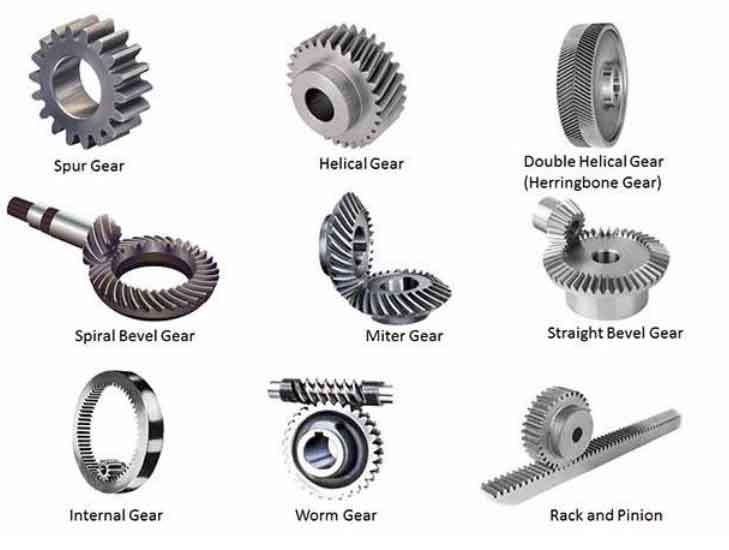Spiral gears and rack and pinion systems are both types of gear mechanisms used in various applications. While they serve similar purposes, they have distinct differences in their designs and functionalities.

1.Spiral Gears:
Spiral gears are a type of cylindrical gear with teeth that are cut in a spiral pattern around the gear’s circumference. The teeth are angled, allowing gradual engagement, resulting in smoother and quieter operation compared to straight-toothed gears. Spiral gears provide high torque transmission and are commonly used in heavy-duty applications that require high gear ratios and strength, such as automotive transmissions and industrial machinery.
1.1 Advantages of Spiral Gears:
- Smoother and quieter operation due to gradual tooth engagement.
- Excellent load-carrying capacity.
- High torque transmission.
- Can handle high gear ratios.
- Suitable for heavy-duty applications.
1.2 Disadvantages of Spiral Gears:
- Complex design and manufacturing process.
- More expensive compared to other gear types.
- Requires proper alignment and maintenance.
2. Rack and Pinion:
A rack and pinion system consists of a linear gear called a rack and a cylindrical gear called a pinion. The rack has straight teeth that mesh with the pinion, converting rotary motion into linear motion or vice versa. This mechanism is commonly used in steering systems of vehicles, CNC machines, and other applications requiring precise linear motion control.
2.1 Advantages of Rack and Pinion:
- Efficient power transmission.
- Precise linear motion control.
- Simplicity in design and operation.
- Easy to manufacture and assemble.
- Suitable for applications requiring linear motion, such as steering systems.
2.2 Disadvantages of Rack and Pinion:
- Limited torque transmission compared to other gear types.
- Prone to wear and backlash over time.
- May require regular maintenance and lubrication.
- Less suitable for high-speed or heavy-duty applications.
Spiral gears are preferred in heavy-duty applications that require high torque transmission and can handle high gear ratios, while rack and pinion systems excel in converting rotary motion to linear motion with precision. The choice between these mechanisms depends on the specific requirements of the application, such as load capacity, gear ratio, noise level, and cost considerations.
